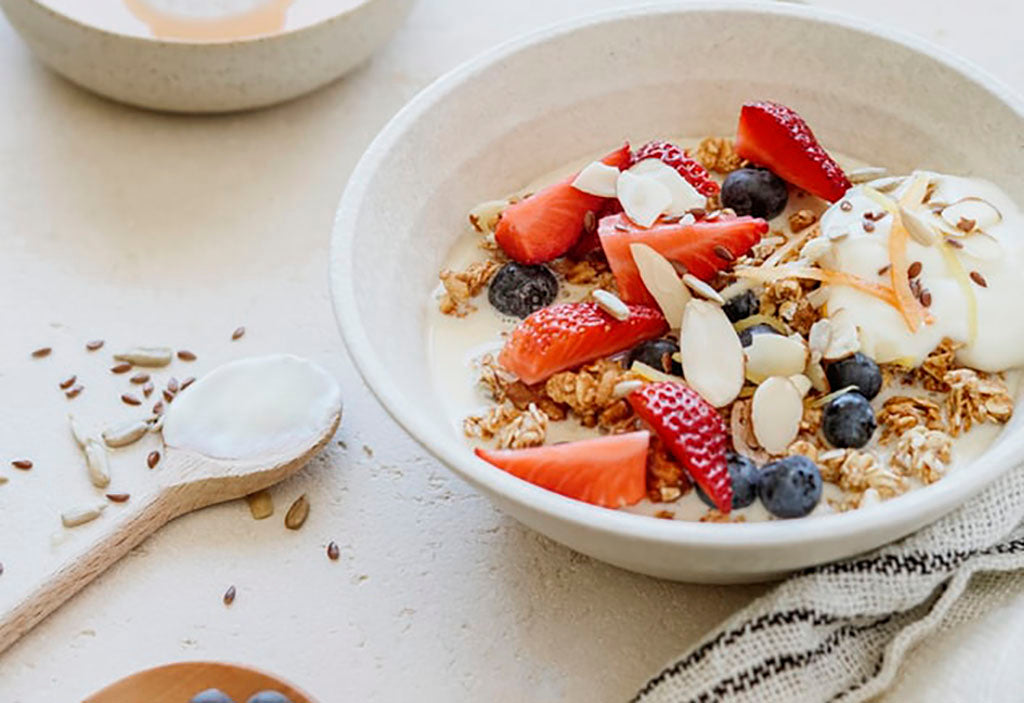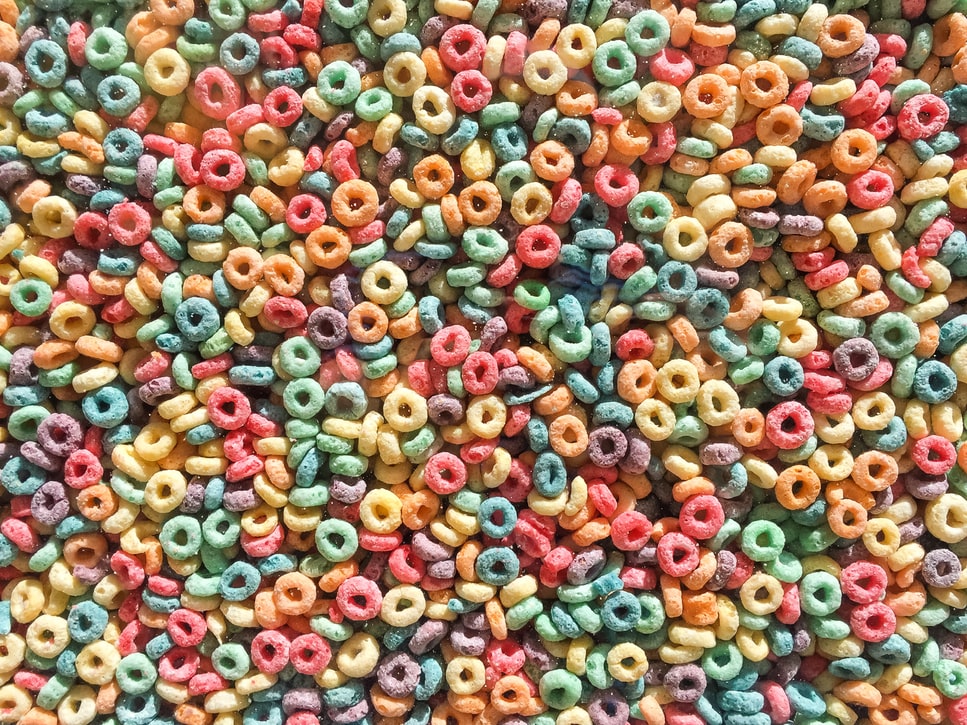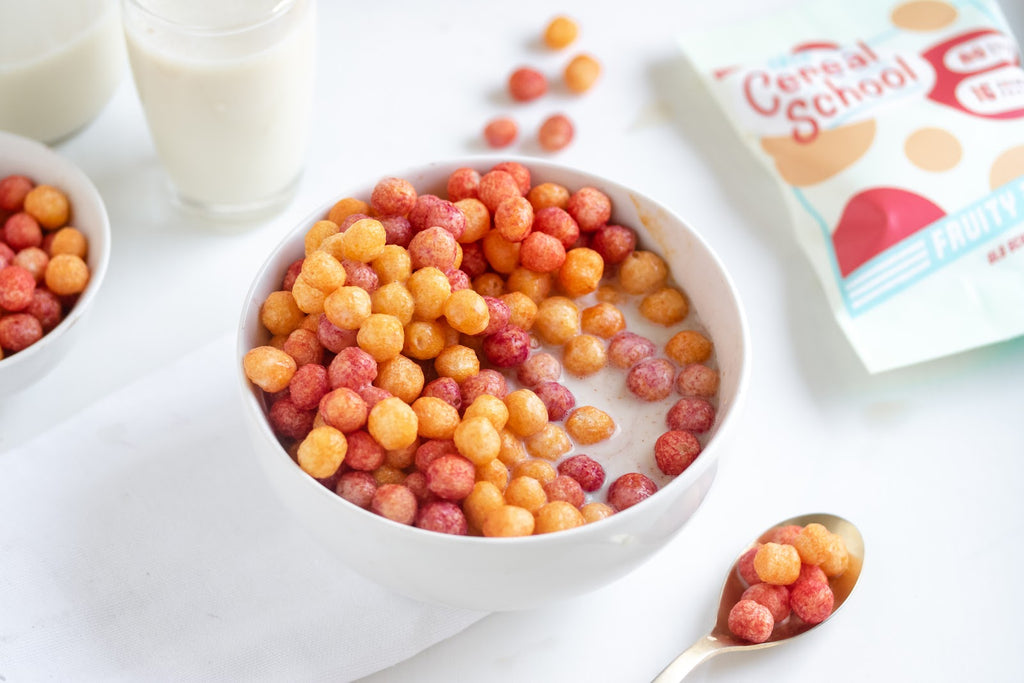
Many things in this world don't get the recognition they deserve: selfie sticks, the Snuggie, dog boots. But when it comes to the humble bowl of cereal, we're thankful there's an entire day dedicated to celebrating the United States' favorite breakfast food. (Not that we need any excuse to enjoy some sweet and crunchy goodness in the morning.)
March 7 is National Cereal Day, a day when cereal aficionados around the country raise a spoon and a bowl to those who brought this beloved product into the world, changing breakfast as we know it.
So, rather than just talk about all the different cereals you might want to snack on to celebrate, let’s use this opportunity to learn about the history of cereal, how it became the ubiquitous classic we love today, and why you need to be careful about how you celebrate this “national holiday.”
The Origins of Breakfast Cereal
Let's go on a time-traveling adventure, back to the period of the Civil War in America. A time when healthy eating practices weren’t necessarily part of the everyday American diet.
Instead, popular breakfast food at that time was eggs, ham, sausage, bacon, and potatoes. While there's nothing wrong with a high-protein breakfast (after all, it plays a crucial role in helping you feel full and stay full), theirs was a high-fat, high-carb diet that didn’t win them any points on the health front.
Unsurprisingly, Americans in the 1860s found themselves plagued with digestive issues. And so reformers turned to a healthier alternative: granula (what we like to call breakfast cereal version 1.0), invented by Dr. James Caleb Jackson.
But this gritty grain wasn’t in the tasty and convenient form you know today. It was a bland mix of dense bran nuggets that were so hard, they had to be soaked overnight.
Then along came Dr. John Harvey Kellogg (yes, of Kellogg's Corn Flakes fame), who was the director of the Battle Creek Sanitarium in Battle Creek, Michigan.
Wanting something softer and easier to chew than granula, he came up with what he called “granola,” which was later changed to “granose” to avoid confusion with Jackon's granula. Since it didn’t require overnight soaking, granose was much more popular because it allowed people to take their breakfast on the go. (Yes, having a quick morning meal was already a thing back in the 1890s). Also, this latest cereal creation tasted better.
Continuing with his breakfast cereal experiments, John Kellogg and his brother William eventually came up with corn flakes in 1894, or as we call it, breakfast cereal version 2.0.
And thus began the cereal-inventing frenzy.
In 1897, Charles William Post (yes, that Post of Post's Honey Bunches of Oats) started selling Grape-Nuts, followed by Post Toasties in 1906.
In 1892, Henry Perk and William Ford (of Ford Motor Company) brought the world Shredded Wheat, a product which was sold, in 1929, to the company now known as Nabisco.
In 1921, Wheaties were created. General Mills bought the rights and introduced this breakfast cereal in 1924. It later introduced the world to Cheerios in 1945.
Then came breakfast cereal version 3.0.
In 1939, Ranger Joe Popped Wheat Honnie, the first sweetened cereal, appeared in grocery stores. Not only was this groundbreaking as the first sweetened cereal, but it was an industry game-changer as the first cereal directly marketed to children. Soon, marketers of all the different cereal brands realized how profitable it was to sell to children.
So, they jumped in on the marketing bandwagon and before you knew it, they were introducing cartoon cereal mascots (hello, Tony the Tiger) on radio and television ads. Cereals were even named after cartoon or movie characters.
The winning combination of sugar and cartoons saw cereal sales soar, and supermarkets were inundated by the cereals we grew up with and learned to love: Frosted Flakes, Trix, Lucky Charms, Fruity Pebbles, and the list goes on.
A National Crisis With Today’s Cereals

OK, so calling it a crisis might be a tad dramatic, but there’s no denying that many (if not most) of today’s cereals are far from healthy. Granted, the taste and texture has improved when you compare it to the tough and unpleasant granula of the 1860s. But with all the added sugars and additives in most boxes these days, you’re probably better off eating those old nuggets from yesteryear.
So, before you celebrate National Cereal Day, here are just a few reasons why you might want to rethink that bowl you’re about to fill up on.
A (Not-So) Sweet Problem
The non-profit Environmental Working Group has discovered that breakfast cereals today contain far more sugar than experts recommend "and should not be considered a part of healthy breakfast.”
That's hardly surprising considering that the average sugar content for cereal these days is around 19.8 grams (5 teaspoons) per serving. The American Heart Association recommends that men should have no more than 36 grams of added sugar per day (9 teaspoons), and women should not exceed 25 grams (6 teaspoons) per day. Translation: If you’re having a bowl of most commercial breakfast cereals, you've pretty much maxed out your sugar quota for the day.
The reason why we can't have all that added sweetness is that sugar is nothing but empty calories, which means it has no nutritional benefits. As if that isn't bad enough, eating too much sugar for too long can also lead to type 2 diabetes, heart disease, and other severe health problems.
But don't be fooled by anything that says "low-sugar" or "sugar-free," as these products are often loaded with artificial sweeteners, which can also be harmful to your health.
Of course, that doesn't mean you must be relegated to a cereal-free life of bland foods. Many healthy sugar-free cereals use natural sweeteners with low- or zero-glycemic levels, such as stevia or monk fruit, to help your blood sugar rise at a slow and steady rate.
Not-So-Natural
Unlike cereals of old, which were made from all-natural whole grains, what you find on supermarket shelves today are often loaded with a variety of additives and preservatives, and even weed killer.
There's BHT — suspected to be an endocrine disruptor — to stop the oil used to make cereal from turning rancid. Then there's trisodium phosphate, used in cereals to enhance flavor and prevent caking, which in high levels can pull calcium out of your bones, making them weak.
As for pesticides in cereal, that often comes in the form of glyphosate, an herbicide widely used across America on cereal crops such as wheat, barley, rye, oats, and canola.
Today’s cereals can also be packed full of the not-so-tasty addition of artificial flavors and colors, which can cause any number of health risks, including cancer, hyperactivity in children, and allergies.
Doesn't Do Its Job
Pop quiz: Why do we have breakfast?
The answer is obvious: To fill us up and keep us going until lunchtime.
The problem is that today's cereal often doesn't have enough protein and fiber, which are essential for helping you feel full for longer and providing you with other health benefits, such as maintaining a healthy weight and lowering your risk of diabetes, heart disease, and some types of cancer.
So, if you're wondering why you're often hungry and in need of a snack around 10 a.m., you can probably blame what isn't in most breakfast cereals today: protein and fiber.
Celebrate National Cereal Day the Healthy Way
After all this information, you might think we’d suggest giving up National Cereal Day altogether, but that's not what we're saying. As self-proclaimed cereal aficionados, we love our morning bowl of tastiness and won't be giving it up anytime soon.
Instead, we recommend celebrating cereal for the reason it was invented: To be a convenient and healthy breakfast food.
It's why we came up with breakfast cereal version 4.0: The Cereal School.
Our cereal has zero sugar, but we can assure you it’s nothing like the bland and hard-to-chew granola from back in the day. Our cereal is sweet and crunchy like the cereal you used to have as a kid, but it won't send your blood sugar levels soaring. That's because all the sweetness you taste is from monk fruit, a natural low-glycemic sweetener from Mother Nature.
Also, you won't have to worry about your morning bowl of cereal being a soup of undetermined chemicals, as we use only natural, non-GMO ingredients, with no preservatives. And since our cereal is gluten-free and grain-free, it doesn't contain any of the common ingredients that are often sprayed with weed killer.
Cereal School is also low-calorie, high-protein (16 grams per serving, to be precise), and low-carb. Plus, you don't even need to look for us at the supermarket. We ship straight to your door. We're confident each of our flavors, from Fruity and Cocoa to Peanut Butter and Cinnamon Bun, will keep you feeling good right until lunchtime.
How's that for an easy (and healthful) way to celebrate National Cereal Day?




